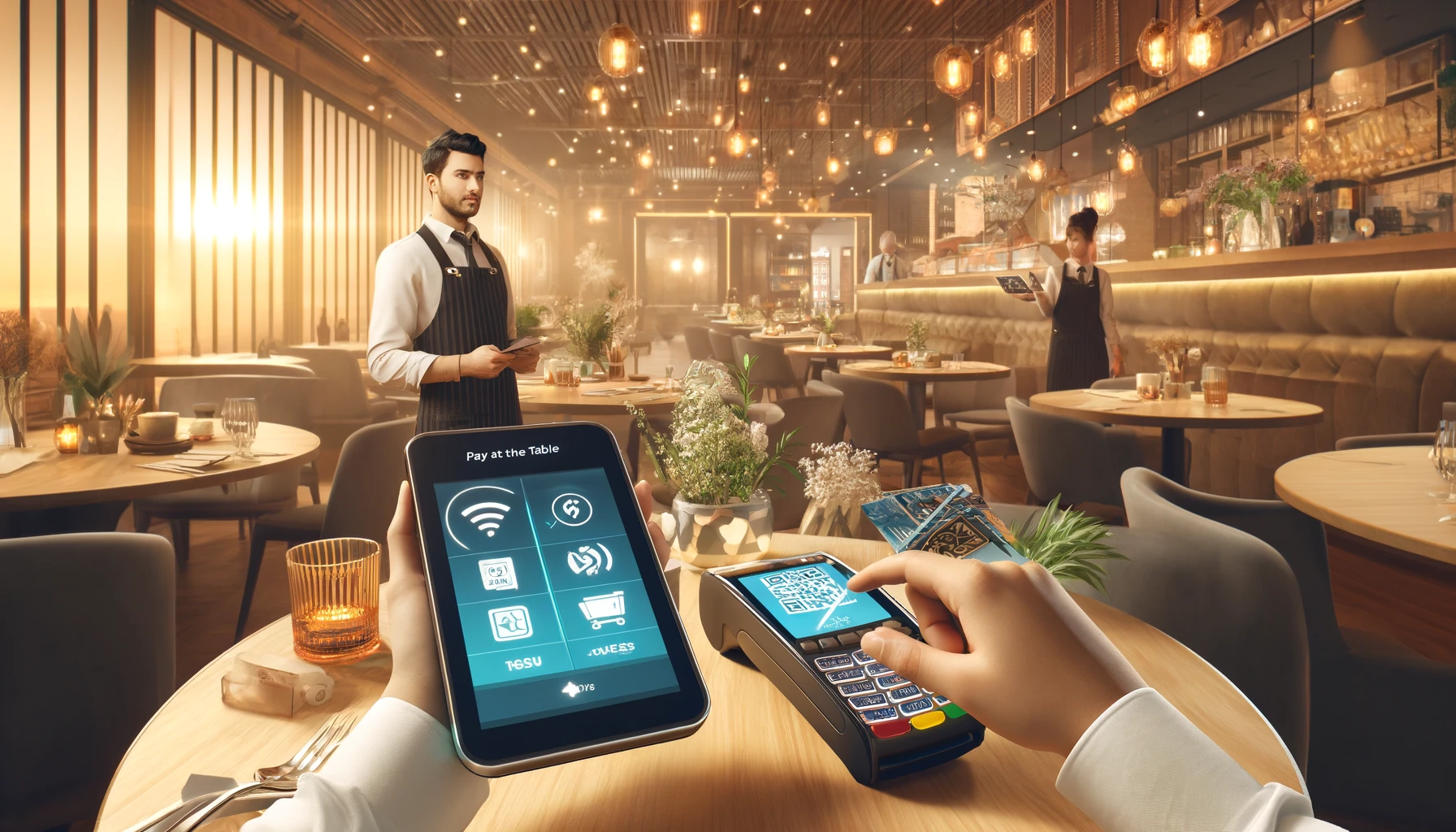Your Guide to Restaurant Pay at the Table Technology
Acex Technologies Inc
March 28, 2025

Excellent customer service is essential for creating a satisfying restaurant experience. You aim to provide the right menu, quality service, and inviting ambiance to inspire customer loyalty.
However, have you considered the role of payment methods in this experience? How customers settle their bills is an integral part of their overall satisfaction.
Modern payment solutions are transforming the dining experience, with options like handheld POS terminals and QR codes. But is this shift suitable for your restaurant? Let’s explore what Pay at the Table technology involves, how it works, and whether its benefits outweigh any drawbacks.
What is Pay at the Table?
Pay at the Table is a system that allows diners to complete their payment directly at their table without handing over their credit or debit cards. Instead of the traditional process where a server takes the check, walks to a register, and returns for signatures or cash, customers use point-in-sale technology—either through handheld devices or QR codes—to finalize payments instantly.
This process enhances the dining experience by offering Secure Payments and reducing friction between customers and staff. Plus, it eliminates unnecessary steps, leading to a faster and smoother checkout.
How Does Pay at the Table Work?
With Handheld Point of Sale (POS) Terminals
Handheld POS terminals empower servers to process payments tableside. Here’s how it works:
- The server brings a point-in-sale device to the table.
- The customer inserts or taps their card or mobile payment method.
- The device processes the transaction securely in real-time.
- A digital receipt is sent via email or text (or printed if necessary).
These Pay at the Table solutions improve efficiency while keeping transactions secure and seamless.
With QR Codes
Many restaurants are embracing QR codes as a contactless Pay at the Table solution:
- A unique QR code is printed on the bill or table.
- Customers scan the code using their smartphones.
- The link directs them to a secure payment portal where they can review their bill, split the check, and pay instantly.
- Once paid, the transaction is confirmed, and the customer is free to leave.
This method reduces staff engagement while allowing customers to have full control over their payment experience.
The Disadvantages of Pay at the Table Technology
Even though Pay at the Table solutions offer a wide range of benefits, they also come with a few drawbacks.
Technology Involves Upfront Investment
Transitioning to POS terminal and QR code systems means investing in new hardware and software. While the long-term benefits often justify this expense, the initial cost can be a barrier for smaller establishments.
A Different Customer Experience
Not all customers are tech-savvy or comfortable with digital payments. Some diners might prefer the traditional interaction of handing their card to a server, while others might struggle with new point-in-sale devices or QR codes. It is, therefore, very important to train staff to help make the transition smooth and seamless.
The Benefits of Pay at the Table Technology
Despite the initial investment, the benefits of Pay at the Table solutions far outweigh the drawbacks. Here’s why restaurants are making the switch:
Customer Security
Secure Payments are a major advantage of Pay at the Table technology. Since customers complete transactions themselves, they never have to part with their cards, reducing the risk of card skimming, fraud, or data breaches.
Improved Table Turn Times
Speed is essential in restaurant operations. Paper checks and cash transactions are very slow mechanisms for clearing out a table. POS terminal and QR code settlement make the payment process much faster. When customers can settle their bills quickly, their tables free up faster, leading to more revenue and increased efficiency.
More Tips for Servers
Digital transactions frequently encourage customers to tip, with pre-set tips appearing on the POS terminals or mobile payment portals. According to research, default tipping options have been shown to increase the tips customers give and, therefore, the earnings for servers.
Reduced Labor Costs
With Pay at the Table solutions, servers can focus on delivering excellent service rather than managing payment transactions. This efficiency can help restaurants optimize their staffing needs and potentially reduce labor costs.
Simple Expense Tracking
Point-of-sale technology simplifies record-keeping by automating payment tracking. All transactions are recorded digitally, and restaurants can easily analyze sales trends, track expenses, and streamline accounting processes.
Say Goodbye to Receipt Paper
Paper receipts are an avoidable, unnecessary waste product of restaurants. They can now avoid wasting a paper receipt per sale by e-receipting in the customer’s email address or mobile phone.
Conclusion
Such as Pay at Table technology, pay at table transformed the restaurant industry with easy, secure payments without any hassle in a seamless manner. There would be a definite learning curve at first, accompanied by an up-front investment but long-term secure payments, easier table turnover with higher tips for the staff while keeping expenses tight.
By adopting Pay at the Table solutions, restaurants can boost the customer experience, improve operational efficiency, and future-proof their business in a rapidly evolving industry.



